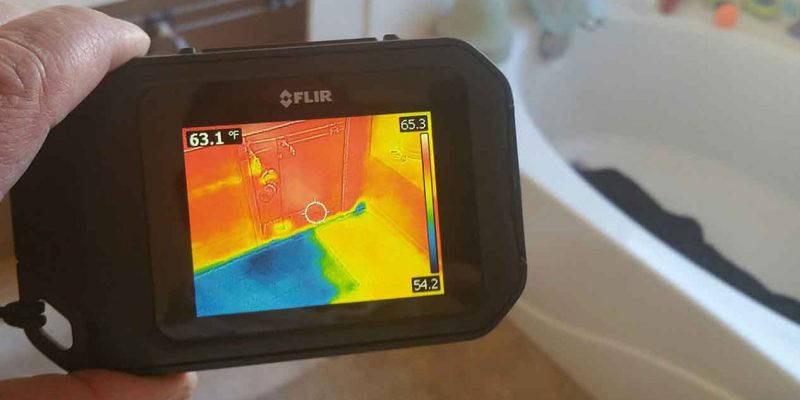Have you ever encountered a situation where you suspect there is something weird going on inside your wall or ceiling? Perhaps a leak within the structure or you suspect there is a cold draft coming in from somewhere but you just cant seem to pinpoint it?
Well with the use of the latest technology, we are now able to identify these problem areas and start seeing the invisible.
This is done through the use of thermal imaging, at one point this technology was very expensive and reserved only for military and government applications. However as this technology progresses it becomes more affordable to apply it to other new industries, in this case the property restoration industry.
The company we have to thank for this is FLIR. Flir is a pioneer in the thermal imagining sector and produces the best equipment available today. We first started using these Flir cameras in my business about 10 years ago and each camera was in the $10,000-$15,000 range, the technology was just being released for use in our industry so they were quite expensive to own. Nowadays the price for a basic model is very affordable as they go for around $1,000. This new price range makes it a must own for any property restoration professional.
For property restoration, some of the best uses of thermal imaging technology include:
- Pin-point moisture intrusion such as leaks within walls and ceilings, avoiding the need to cutting costly inspection holes.
- Identify cold and hot spots, finding areas of missing insulation which could lead to drafts and energy loss.
- Identify maintenance issues or potential dangers such as electrical overheating of components.
- Assess the efficiency of HVAC systems, finding any areas of air leaks.
- Identify structural defects
- Identify clogs in piping
Note: thermal imagining readings can be attained without damaging the property, no pins or probes are required therefore there will be no sign of damage to your property.
Also, thermal imaging will also work in areas of total darkness as it is operating on heat differentials it does not need any visible light to operate. This is specially handy when inspecting areas such as attics, crawlspaces, or there is simply no power/lighting available in the property.
When it comes down to it, having thermal imaging tools is a must for property restoration companies and it is no wonder why leading restoration companies have adopted this technology. The ability to inspect, identify, record, and report on property issues has made it a great business tool to better serve and inform clients.

